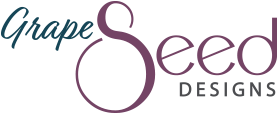So many people get stuck trying to come up with completely original ideas. Whether it’s a product or branding, they feel uninspired because all of their ideas seem to already exist.
Here’s both the good news and the bad news: there’s no such thing as a truly original idea.
Ok, I almost never speak in absolutes, and that’s probably fair here, too. But the truth is, almost nothing you see now is new.
Everything is an iteration of something that came before it.
But you want to know the secret to creating something that feels new and fresh? You need to learn how to steal like an artist.
This phrase comes from (ok, 100% is) the title of Austin Kleon’s book (here it is on Amazon, but bonus points if you hit up your local book store instead). And it sounds absurd, right? I mean, you shouldn’t steal anything, ever, right?!
So here’s what it means in real life.
Have you ever heard about curating your social circle because you are the sum of the 5 people closest to you? (Thanks Jim Rohn) The same concept applies here.
To create ideas that feel new and can legitimately be passed as your own, find about 3-5 sources of inspiration.
We see this in writing, too — remember all those high school essays where you needed a minimum number of sources? It’s 100% ok, and even good, to combine information that already exists. You just need to research, assemble, and give it a bit of color in a way that’s unique to you.
How does this apply to my branding?
I’m so glad you asked, because this is something that helps when working with a designer. It also 100% applies if you DIY your first brand.
When you’re starting a brand — or looking for a refresh — it’s essential to look for inspiration. At least 3-5 sources, though honestly you should collect as many pieces of inspiration as possible and refine from there. But if you can find 3-5 cornerstone inspiration pieces, you’re building on a good foundation.
Now here’s a special trick, and one that people tend to forget about: look for inspiration outside your industry or niche.
If you work in alternative wellness, you might look for inspiration from textile or fiber artists. Mobile app design can take influence from the architecture industry. A business lawyer might find a fresh take from high-tech companies releasing the latest mobile apps and wearables. If you’re making home goods, inspiration might be sitting in the industrial factory around the corner.
The point is this — the farther outside your niche you look, the fresher your final result will feel.
This doesn’t mean you’re going to outright copy what that outside niche is doing. It means you’re going to find elements you like and blend them with elements from a second and third source, molding them all into something new. (Remember, design is all about the assembly of core elements. The beauty is in how those elements come together.)
This is why I love that I work with both equine and tech businesses. They create such a dichotomy (their usual aesthetics feel so at odds with each other) that they blend well into a fresh look that makes them stand out.
So the next time you’re creating for something new, trying looking outward instead of in. Chances are, all the pieces are already there — they’re just waiting for your new perspective.

